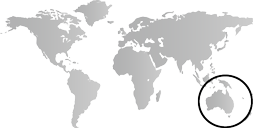The period from 1400 to 1600 sees the ongoing development of earlier artistic and architectural traditions as well as the first encounters between Europeans and the peoples of the Pacific. In New Zealand, Maori wood carving traditions continue to evolve, developing into their classic form around 1500. On Easter Island, production of the monumental stone figures continues, reaching its apex circa 1400–1500. Afterwards the tradition gradually declines as increased warfare and the growing scarcity of the large pieces of wood necessary to transport the giant statues make production more difficult. Around 1450, a new religious and artistic tradition devoted to the creator god Makemake in the form of the tangata manu, or “birdman,” emerges and eventually supercedes the earlier moai rituals. In Micronesia, the people of Pohnpei make further additions to the imposing residential and religious compounds of the megalithic city of Nan Madol.
The first European explorers reach the Pacific during the 1500s. In 1521, Spanish navigator Ferdinand Magellan crosses the ocean from east to west, visiting the Tuamotu Archipelago in Polynesia and the Philippines. Later in the 1520s, Dutch and Portuguese traders, involved in the spice trade in island Southeast Asia, begin to interact with the Melanesian peoples of New Guinea. During the latter half of the century, Spanish vessels, sailing regularly between South America and newly established colonies in the Philippines, encounter a number of Pacific archipelagos, including the Solomon, Santa Cruz, and Marquesas islands.
